Navigation
Haiti to Bolster Protection of One of Its Largest Natural Reserves
Support for a sustainable management program at Macaya National Park: A $9 million grant will help Haiti carry out a sustainable land management program at the Macaya National Park, home to one of the country’s largest remaining forests, the Inter-American Development Bank (IDB) announced on 1 August 2013.
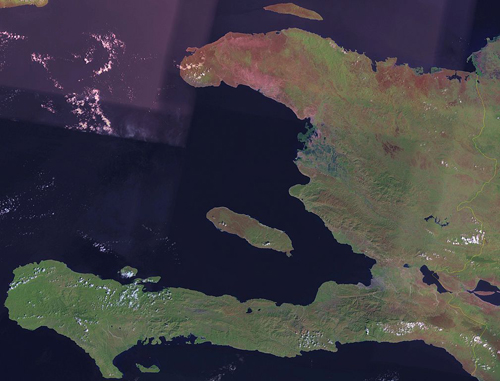 Pic Macaya National Park (French: Parc National Pic Macaya) is one of two national parks of the Republic of Haiti,: the other is La Visite National Park. It is located on the peninsula in the southern part of the country, and features the country's last stand of virgin cloud forest. Elevations in the rugged park reach a maximum height of 2,347 meters (7,700 feet) above sea level at Pic Macaya (Macaya Peak), the second highest point in Haiti behind Pic la Selle. The mountains are mainly karstic and volcanic. The park features some endangered plant and animal life, including some endemic to the island of Hispaniola. Text and map courtesy of Wikipedia
Pic Macaya National Park (French: Parc National Pic Macaya) is one of two national parks of the Republic of Haiti,: the other is La Visite National Park. It is located on the peninsula in the southern part of the country, and features the country's last stand of virgin cloud forest. Elevations in the rugged park reach a maximum height of 2,347 meters (7,700 feet) above sea level at Pic Macaya (Macaya Peak), the second highest point in Haiti behind Pic la Selle. The mountains are mainly karstic and volcanic. The park features some endangered plant and animal life, including some endemic to the island of Hispaniola. Text and map courtesy of Wikipedia
A $9 million grant will help Haiti carry out a sustainable land management program at the Macaya National Park, home to one of the country’s largest remaining forests, the Inter-American Development Bank (IDB) announced on 1 August 2013.
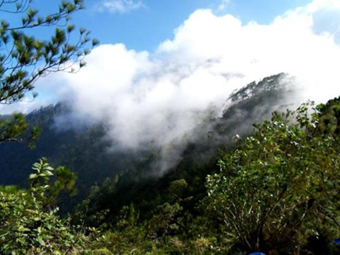 The residual endemic forest.: Photograph courtesy of IDBHaiti has lost almost all of its forest coverage due to pressure from population growth, harmful farming practices and the demand for firewood to make charcoal, the principal source of energy. Deforestation hastens soil erosion, which is worsened by the country’s exposure to hurricanes and tropical storms. It also exacerbates the flooding and landslides that occur every rainy season.
The residual endemic forest.: Photograph courtesy of IDBHaiti has lost almost all of its forest coverage due to pressure from population growth, harmful farming practices and the demand for firewood to make charcoal, the principal source of energy. Deforestation hastens soil erosion, which is worsened by the country’s exposure to hurricanes and tropical storms. It also exacerbates the flooding and landslides that occur every rainy season.
The new grant, drawn from the Haiti Reconstruction Fund, will complement a previous grant from the Global Environment Facility (GEF) for the national park’s program, which focuses on the upper watersheds of the country’s southwestern peninsula. Other donor-funded watershed management programs target the lower reaches and piedmont areas.
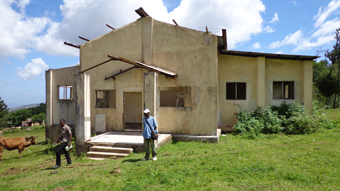 A public building inside the Park, to be the Park Headquarters.: Photograph by Antonio Pereira courtesy of IDB
A public building inside the Park, to be the Park Headquarters.: Photograph by Antonio Pereira courtesy of IDB
The new resources will be used to strengthen the Macaya National Park’s surveillance corps and its management, reforest about 1,500 hectares (3,750 acres) of degraded lands, and build watershed protection infrastructure to mitigate flooding and erosion.
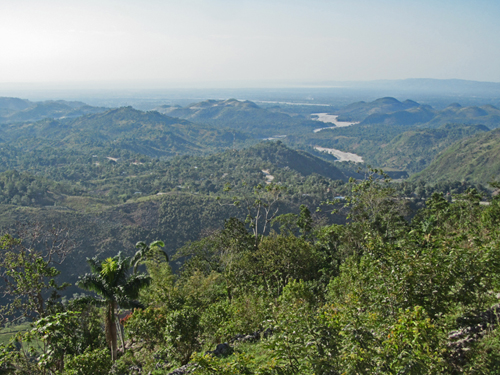 Macaya National Park: Photograph by Bruno Jacquet, IDB Project Team Leader
Macaya National Park: Photograph by Bruno Jacquet, IDB Project Team Leader
“The project will promote natural resources sustainable management and contribute to reduce impacts of natural disasters,” said Bruno Jacquet, IDB Project Team Leader.
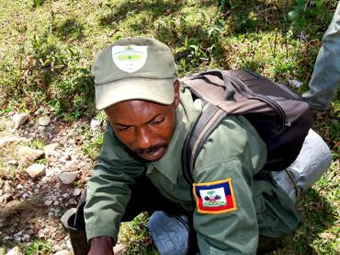 A park ranger, working as a guide for tourists.: Photograph courtesy of IDB
A park ranger, working as a guide for tourists.: Photograph courtesy of IDB
The grant will also finance activities designed to engage local authorities, institutions and families that farm within the national park’s perimeter or cut trees to make charcoal. The program will encourage these stakeholders to become involved in land planning and in the management of the national park.
Nature Canada in Haiti: Educating Children
and Protecting Forests and Migratory Birds
The IDB is Haiti’s leading multilateral donor. One of its priorities is supporting Haiti’s effort to improve agriculture. The Ministry of Agriculture, Natural Resources and Rural Development and the Inter-Ministerial Land Use Committee are taking steps to modernize animal and plant health services, increase farmers’ access to agricultural innovations, expand access to irrigation, reduce crop damage caused by floods, and improve land management services.
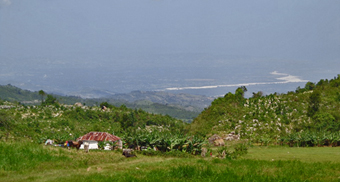 Macaya National Park: Photograph by Bruno Jacquet, IDB Project Team Leader
Macaya National Park: Photograph by Bruno Jacquet, IDB Project Team Leader
As one of Haiti’s leading donors, the IDB is currently financing investment projects in the agriculture sector totaling more than $200 million, including crop intensification, irrigation, rural value chains, farming technology transfers, land tenure clarification and watershed management.
The project objective is to contain the rapid environmental degradation in the upper watershed of the southwestern part of Haiti. The project aims to promote sustainable natural resources management and watershed protection in order to prevent deforestation, soil erosion and related natural disasters. The project is comprised of the following two components. Component 1: institutional and local governance strengthening; and component 2: enhancement and restoration of ecosystem services.
This news is from the Inter-American Development Bank 1 August 2013
Posted on the Horizon International Solutions Site 1 August 2013.
Note:
An article on efforts in Haiti, "World’s Largest Solar Hospital Provides Comprehensive Care in Haiti" is available at http://www.solutions-site.org/node/987, a Partners In Health initiative with many cooperating entities.
Search
Latest articles
Agriculture
- World Water Week: Healthy ecosystems essential to human health: from coronavirus to malnutrition Online session Wednesday 24 August 17:00-18:20
- World Water Week: Healthy ecosystems essential to human health: from coronavirus to malnutrition Online session Wednesday 24 August 17:00-18:20
Air Pollution
- "Water and Sanitation-Related Diseases and the Changing Environment: Challenges, Interventions, and Preventive Measures" Volume 2 Is Now Available
- Global Innovation Exchange Co-Created by Horizon International, USAID, Bill and Melinda Gates Foundation and Others
Biodiversity
- It is time for international mobilization against climate change
- World Water Week: Healthy ecosystems essential to human health: from coronavirus to malnutrition Online session Wednesday 24 August 17:00-18:20
Desertification
- World Water Week: Healthy ecosystems essential to human health: from coronavirus to malnutrition Online session Wednesday 24 August 17:00-18:20
- UN Food Systems Summit Receives Over 1,200 Ideas to Help Meet Sustainable Development Goals
Endangered Species
- Mangrove Action Project Collaborates to Restore and Preserve Mangrove Ecosystems
- Coral Research in Palau offers a “Glimmer of Hope”
Energy
- Global Innovation Exchange Co-Created by Horizon International, USAID, Bill and Melinda Gates Foundation and Others
- Wildlife Preservation in Southeast Nova Scotia
Exhibits
- Global Innovation Exchange Co-Created by Horizon International, USAID, Bill and Melinda Gates Foundation and Others
- Coral Reefs
Forests
- NASA Satellites Reveal Major Shifts in Global Freshwater Updated June 2020
- Global Innovation Exchange Co-Created by Horizon International, USAID, Bill and Melinda Gates Foundation and Others
Global Climate Change
- It is time for international mobilization against climate change
- It is time for international mobilization against climate change
Global Health
- World Water Week: Healthy ecosystems essential to human health: from coronavirus to malnutrition Online session Wednesday 24 August 17:00-18:20
- More than 400 schoolgirls, family and teachers rescued from Afghanistan by small coalition
Industry
- "Water and Sanitation-Related Diseases and the Changing Environment: Challenges, Interventions, and Preventive Measures" Volume 2 Is Now Available
- Global Innovation Exchange Co-Created by Horizon International, USAID, Bill and Melinda Gates Foundation and Others
Natural Disaster Relief
- STOP ATTACKS ON HEALTH CARE IN UKRAINE
- Global Innovation Exchange Co-Created by Horizon International, USAID, Bill and Melinda Gates Foundation and Others
News and Special Reports
- World Water Week: Healthy ecosystems essential to human health: from coronavirus to malnutrition Online session Wednesday 24 August 17:00-18:20
- STOP ATTACKS ON HEALTH CARE IN UKRAINE
Oceans, Coral Reefs
- World Water Week: Healthy ecosystems essential to human health: from coronavirus to malnutrition Online session Wednesday 24 August 17:00-18:20
- Mangrove Action Project Collaborates to Restore and Preserve Mangrove Ecosystems
Pollution
- Zakaria Ouedraogo of Burkina Faso Produces Film “Nzoue Fiyen: Water Not Drinkable”
- "Water and Sanitation-Related Diseases and the Changing Environment: Challenges, Interventions, and Preventive Measures" Volume 2 Is Now Available
Population
- "Water and Sanitation-Related Diseases and the Changing Environment: Challenges, Interventions, and Preventive Measures" Volume 2 Is Now Available
- "Water and Sanitation-Related Diseases and the Changing Environment: Challenges, Interventions, and Preventive Measures" Volume 2 Is Now Available
Public Health
- Honouring the visionary behind India’s sanitation revolution
- Honouring the visionary behind India’s sanitation revolution
Rivers
- World Water Week: Healthy ecosystems essential to human health: from coronavirus to malnutrition Online session Wednesday 24 August 17:00-18:20
- Mangrove Action Project Collaborates to Restore and Preserve Mangrove Ecosystems
Sanitation
- Honouring the visionary behind India’s sanitation revolution
- Honouring the visionary behind India’s sanitation revolution
Toxic Chemicals
- "Water and Sanitation-Related Diseases and the Changing Environment: Challenges, Interventions, and Preventive Measures" Volume 2 Is Now Available
- Actions to Prevent Polluted Drinking Water in the United States
Transportation
- "Water and Sanitation-Related Diseases and the Changing Environment: Challenges, Interventions, and Preventive Measures" Volume 2 Is Now Available
- Urbanization Provides Opportunities for Transition to a Green Economy, Says New Report
Waste Management
- Honouring the visionary behind India’s sanitation revolution
- Honouring the visionary behind India’s sanitation revolution
Water
- Honouring the visionary behind India’s sanitation revolution
- Honouring the visionary behind India’s sanitation revolution
Water and Sanitation
- Honouring the visionary behind India’s sanitation revolution
- Honouring the visionary behind India’s sanitation revolution

